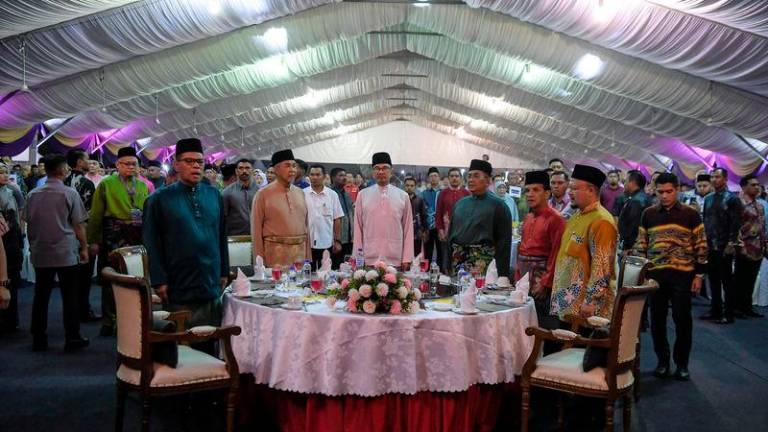THE dress code issue never gets worn out. Lately, the Rukun Negara has been dragged in to adorn the contention that dressing must be in line with the five precepts.
One month ago, a security guard at a public hospital in Penang turned away a 72-year-old man wearing shorts that fell short of the knee. The hospital management explained that shorts were a breach of the Rukun Negara’s fifth principle of courtesy and morality.
Someone has upped the ante in this endless debate and, predictably, scissors were unsheathed as opposing sides snipped away at each other.
Proponents of a rigid “one dress fits all” code now claim that the wearing of shorts is an act of rudeness and downright immoral. We are talking about an old man visiting a hospital. Is it rude of him to wear baggy shorts, and will the nurses see him as a moral threat?
On the other hand, many TikTok users keep uploading videos promoting “dress to please yourself” clothing styles that often mean bikini-like tops and mini-shorts. By encouraging sexual display of skin, these social influencers become agents of feminine degradation.
The use of women as sex objects is a century-old Code Red technique to sell Western products and services.
The conservative and liberal standpoints are defective because they ignore context. All dress styles are designed to be contextual, relating to a society and particular situations in that society.
Clothing serves five basic objectives: grant protection from harm, shield us from unkind weather, be function-oriented and practical, enhance our comfort and project group identity.
Let us consider two examples of extremities: Last June, a Member of Parliament claimed that nurses’ uniforms were immodest as they were too tight and revealed the body shapes.
This opinion is extreme because nurses’ uniforms are designed to be functional and decent to enable nurses to be fast on their feet. They must also not be so loose as to hit equipment or fixtures, causing damage or making the nurse fall.
The other example of extremity: Five years ago, newspapers carried pictures of a woman tourist in Sabah walking in a shopping centre food court wearing a long-sleeved shirt and bikini bottom. Liberals may defend her right but it is an extreme position because exposing most of her thighs in a place known for crowds is to risk sexual harm and disrupt social peace. She ought to have been arrested and fined.
The threat of molestation is real. The same year in 2018, the Thai government issued an advisory that women should not dress too sexily during the water festival of Songkran which draws mammoth crowds.
Every year, as many as half of all women participants in the celebration report being groped by men to satisfy their lust. Women’s rights groups demand greater police presence as the solution, but are they prepared to pay heavier taxes to support a massive police force?
Many non-Islamic countries have laws forbidding women from walking about in bikinis away from the poolside or beach. Countries that have imposed fines include South Korea, Italy, Spain and parts of the US.
In Malaysia, harm may come about when too much female skin is exposed through the wearing of mini-shorts or mini-skirts and bikini-type blouses in public places. All it takes is a crowd surge inducing panic, and wild youths may go on a rampage of molestation.
Back to the dress code. Last March, an elderly female visitor was denied entry by a security guard for wearing calf-length trousers at a public hospital in Pahang.
A month before that, a woman was denied treatment at the emergency room of a public hospital in Perak for entering in shorts and, hence, being “indecently dressed”. Our public hospitals may have forgotten that their overriding consideration is to treat the sick and attend to emergency cases, not to vet fashion styles.
Last January, a slightly ridiculous situation occurred when a woman dressed in shorts that were above her knees went to the Kajang police station to report a car accident but was denied entry.
How many law enforcement officers today know that our policemen wore khaki shorts stopping above the knees in the old days for ease of movement on foot?
How many security guards know that skirts began as men’s wear? The skirt held up with a belt, was the standard uniform for ancient Greek, Roman and Scottish warriors. To this day, Scottish men still wear skirts to official functions. Skirts were popular as soldierly wear because they served the function of practicality in allowing freedom of movement in combat.
Skirts for warriors eventually gave way to trousers, and there was a functional reason for it: Trousers were more practical for horse riding, and thus cavalrymen led the switch.
Dress code prescriptions also serve to shield us from unkind weather. Desert people cover up with long flowing robes and headdresses to keep the harmful blazing sun from dehydrating their bodies. Long dresses keep people cooler in hot dry regions.
However, long-flowing dresses are unsuitable in a tropical rainforest with thick undergrowth. Context is important – it determines correctness.
So, forest and bush tribes prefer dressing scantily for ease of movement in lush flora. Surely you have seen early photographs of the Orang Asli and Orang Asal forest people as well as the Amazon tribes and Australian aborigines. There is nothing indecent or rude about their skimpy “Tarzan and Jane” attire as it suits the environment they live in.
Nor do skimpy loin garments denote anti-religiosity among primitive forest people, as they have a deep love for nature as the hand of God and their moral conduct is far superior to that of civilised people in that they do not engage in wanton destruction of wildlife. Some countries are deploying their remaining indigenous folks as climate change forest guardians.
As context is the most important determinant of dress styles, is it possible for our multicultural society to reach a consensus dress code and put an end to the ceaseless dressing-down over clothing in public places?
Yes, if everyone is willing to embrace conciliation instead of confrontation.
First, recognise that the two opposing viewpoints are extreme: one is that any person in a public place regardless of their culture or religion must wear attire that covers the ankles and wrists; the other is that non-Muslim men and women must enjoy the freedom to dress as they please anywhere.
A multicultural society must acknowledge that dress styles need to suit present-day contexts. To gain wide acceptance, a standard code of non-Muslim attire may stipulate that dresses worn in public places must extend to the elbows and knees while covering the midriff.
Elbows and knees are halfway down the limbs and serve as ideal conciliation points that meet the majority group identity dress style halfway.
However, there should be no application of dress code for emergency, crime or accident cases anywhere. Discretion must be exercised.
As a matter of interest, long shorts became the rage at all women’s ready-to-wear shows during the 2023 summer season in Europe. No more emphasis on mini-skirts or mini-shorts.
The best way to ensure compliance with a moderate dress code is to impose a licensing requirement on all garment retailers that any skimpy clothing must be sold only as home wear, sports wear or beach wear and labelled as such.
The writer champions interfaith harmony. Comments: letters@thesundaily.com











